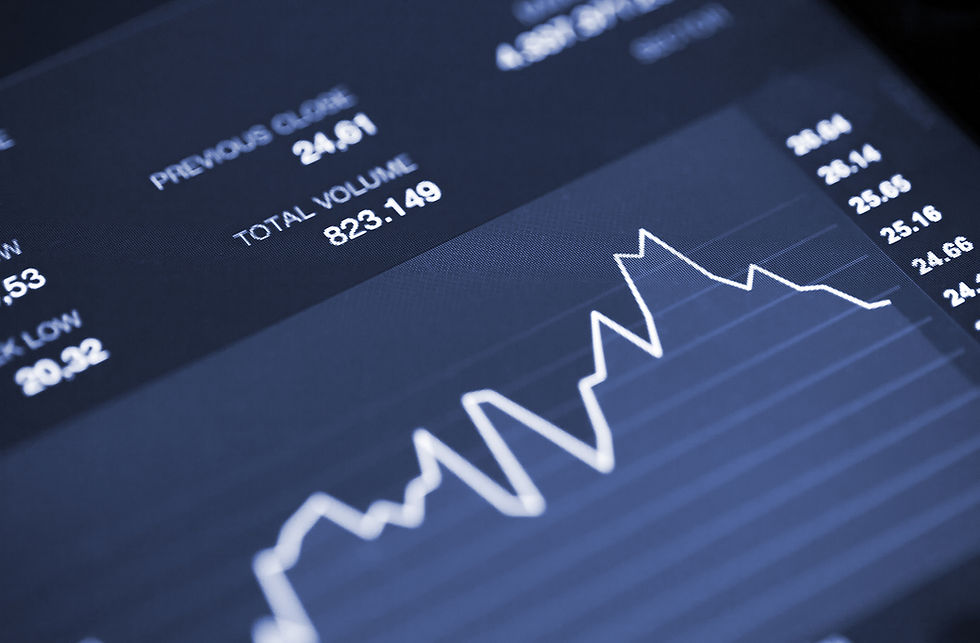Nine Month Delivery
- 4717

- Feb 15, 2023
- 3 min read

Everyone came back from Davos in a spanking good mood, but investors were wound a little tight after last year. And some of the signs are looking good: The dollar is down 7% from its peak in October – an indicator that money is no longer scrambling to come in out of the rain. The threat of global recession is receding as forecasts for 2023 are being revised upward. In the words of one JPMorgan analyst on Europe, “Hello lower gas prices and bye-bye recession.”
There is a whiff of desperate exuberance about all this.
US inflation in January was down to 6.5% - but the cooling is starting to cool. So the Fed is likely to keep its hand on the monetary brakes longer than investors are… betting… hoping….praying…. Costs are rising faster than sales. Stocks are looking good, but the funnel is thin, and the big banks are off by 20% on across the board: Goldman Sachs has announced that it is sacking 3,200 employees, most of the big banks are following suit. Alphabet is firing some 12,000 and Microsoft 10,000 – on top of the 150,000 pink slip wash out in the tech sector last year. Even Tim Cook, Apple’s adorable CEO, has taken a 40% pay cut that, one assumes, will distract from the near slave-labor “campus” his company is bank-rolling in China.
Red flags flutter on main street as well: FedEX and Amazon are sucking wind, and if they aren’t canaries in the consumer demand coalmine, then what is? With inflation and general uncertainly eating away at demand, the “pricing power” of companies is turning out to be weaker that thought last year. The smart money is expecting a mild technical recession in the first half of 2023, with a moderate recovery in the second half of the year, even as rates stay high into 2024. Nothing, really, to get too excited or terrified about.
Therein, though, lies the blind spot: Once people start to lose jobs as demand slackens, it’s hard to gauge the spooked buyer reaction. Anyone in their peak spending years can remember the financial crisis, and are libel to tighten the belt with gusto. The American consumer, while slow on the uptake, can dig its heels in like no other.
Ironically, despite the beat-down globalization has taken since 2008, that’s the star on which the economy hangs. That Europe will avoid recession, which it probably will, as the region seems to have dodged the economic bullet from the war in Ukraine, but a lot of that was blind luck – a warm winter plus a locked down China’s demand for energy kept prices down as Europe toped up its natural gas on the cheap. There is no guarantee that will happen again if the war drags on.
China, as its vice premier Liu He announced, is open for business, but this may not be the global economic stimulant that investors are pinning their hopes on. For one thing, while Americans spent the lockdown inventing innovative ways to get drunk, President Xi seems to have spent his extended lockdown channeling his inner Mao – which will be problematic to ROI. So will rising commodity prices.
And then there is that “dual circulation” economy Xi is trying to create: China sells the world everything but buys nothing: Beijing is trying to force the rest of the planet into an imperial market model, with China at the center. Which is something you’d think was a clever idea if you’d spent your adult life chain-smoking Marx and therefore no nothing about market economies.
A recent paper by Goldman Sachs –currently punch-drunk, but they do know something about economics – showed that the heaviest drag from monetary policy takes nine months to deliver. And here we are. If the theory holds true we are looking at a year that is unremarkable, but after the last few years, that may be something to celebrate.








